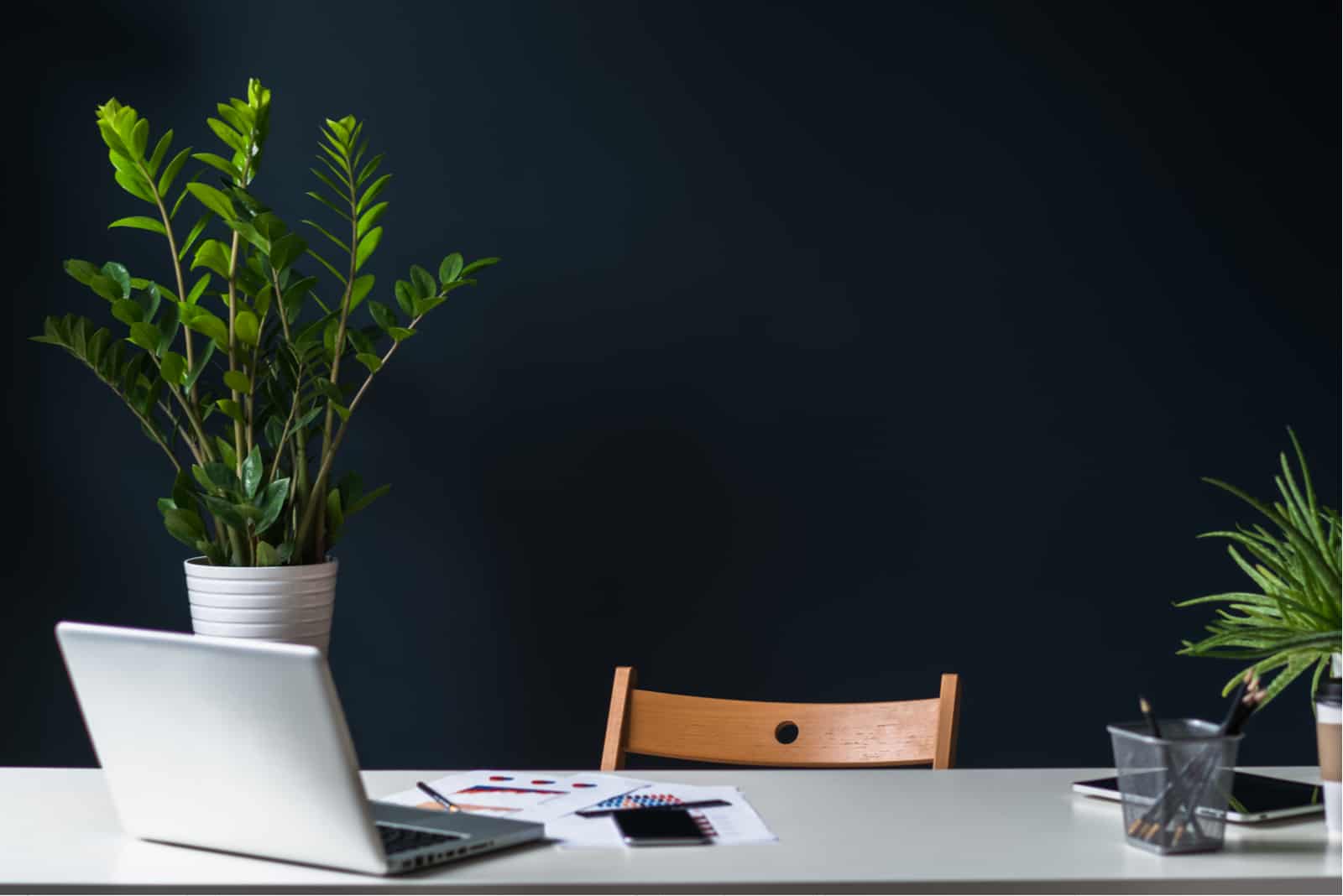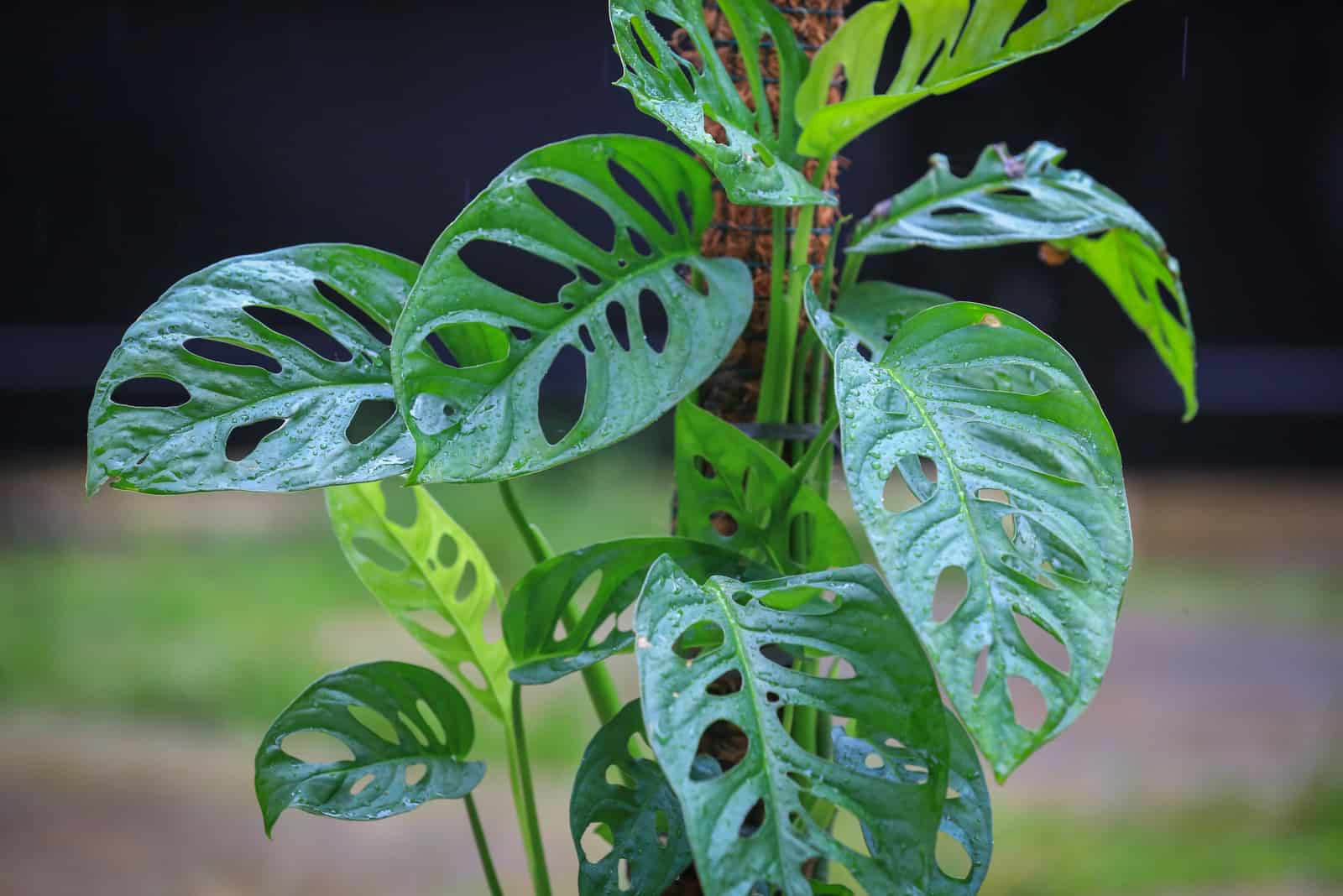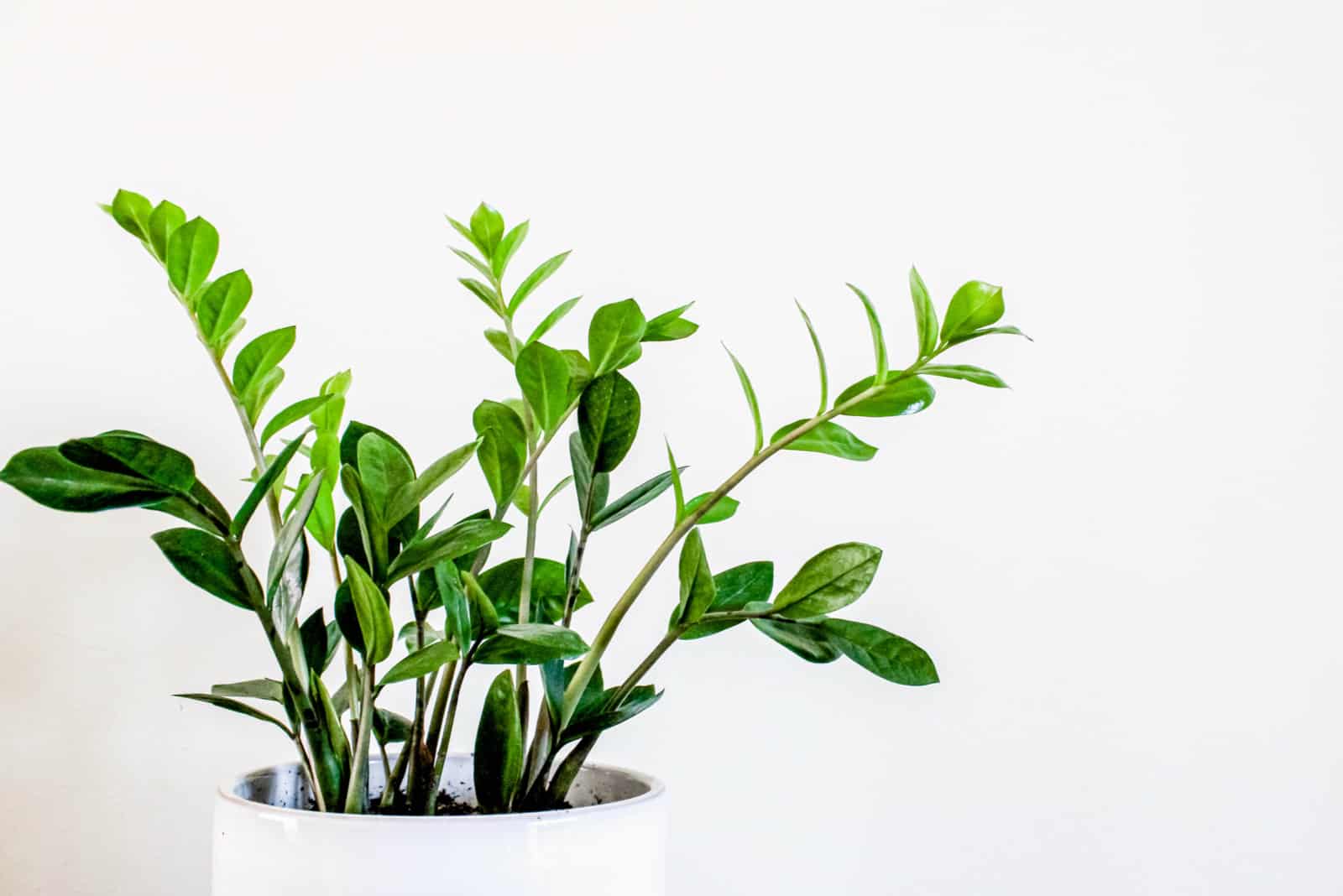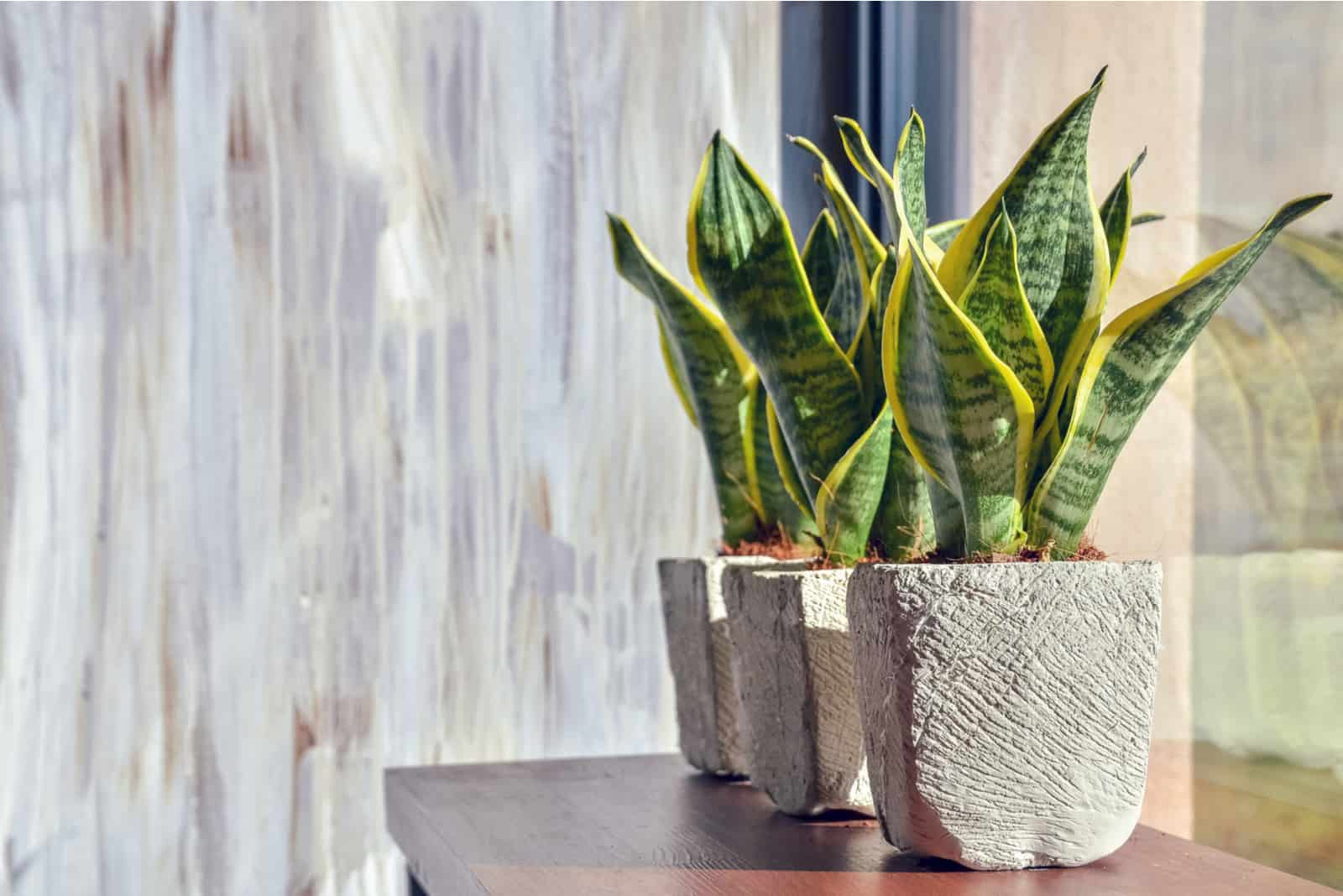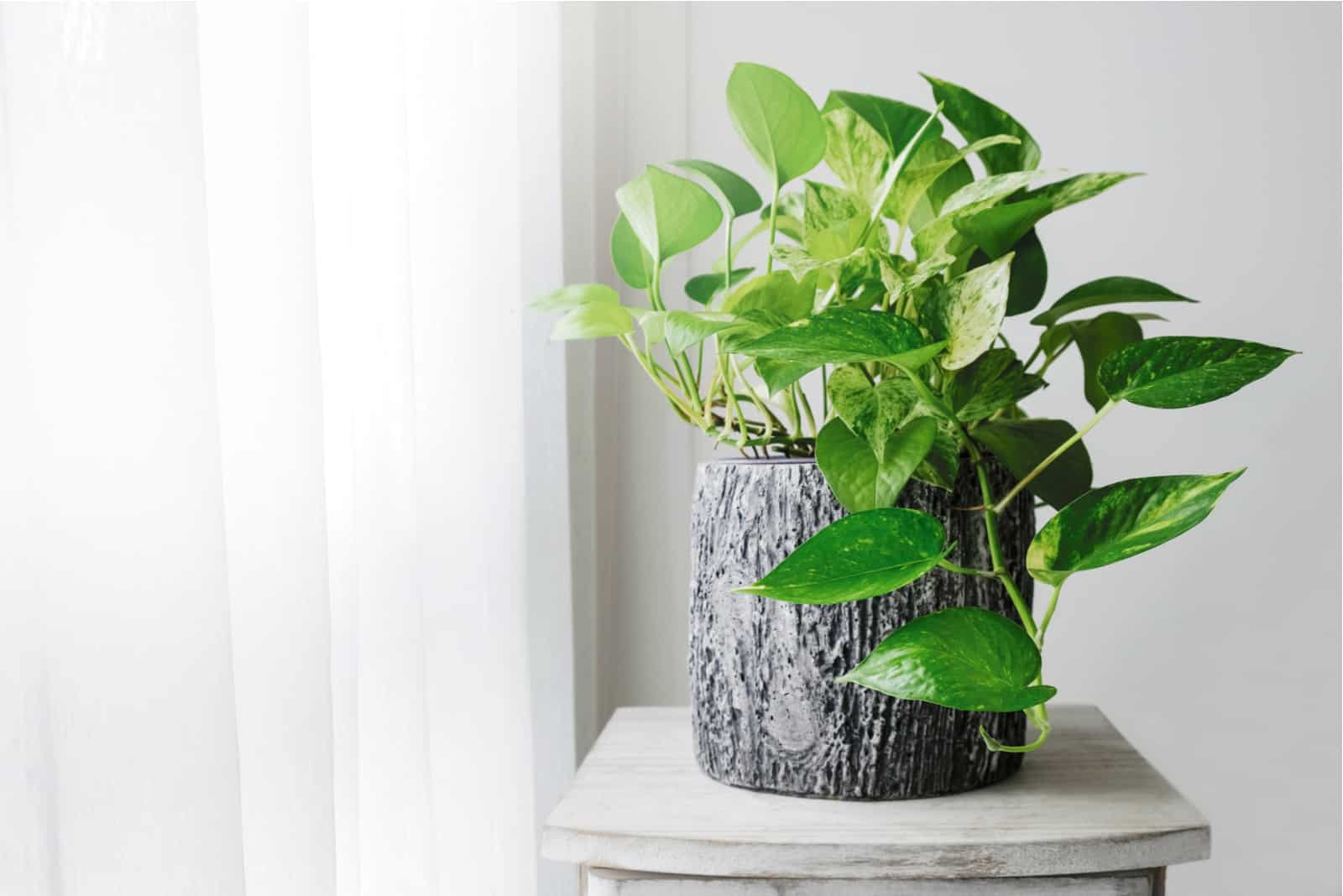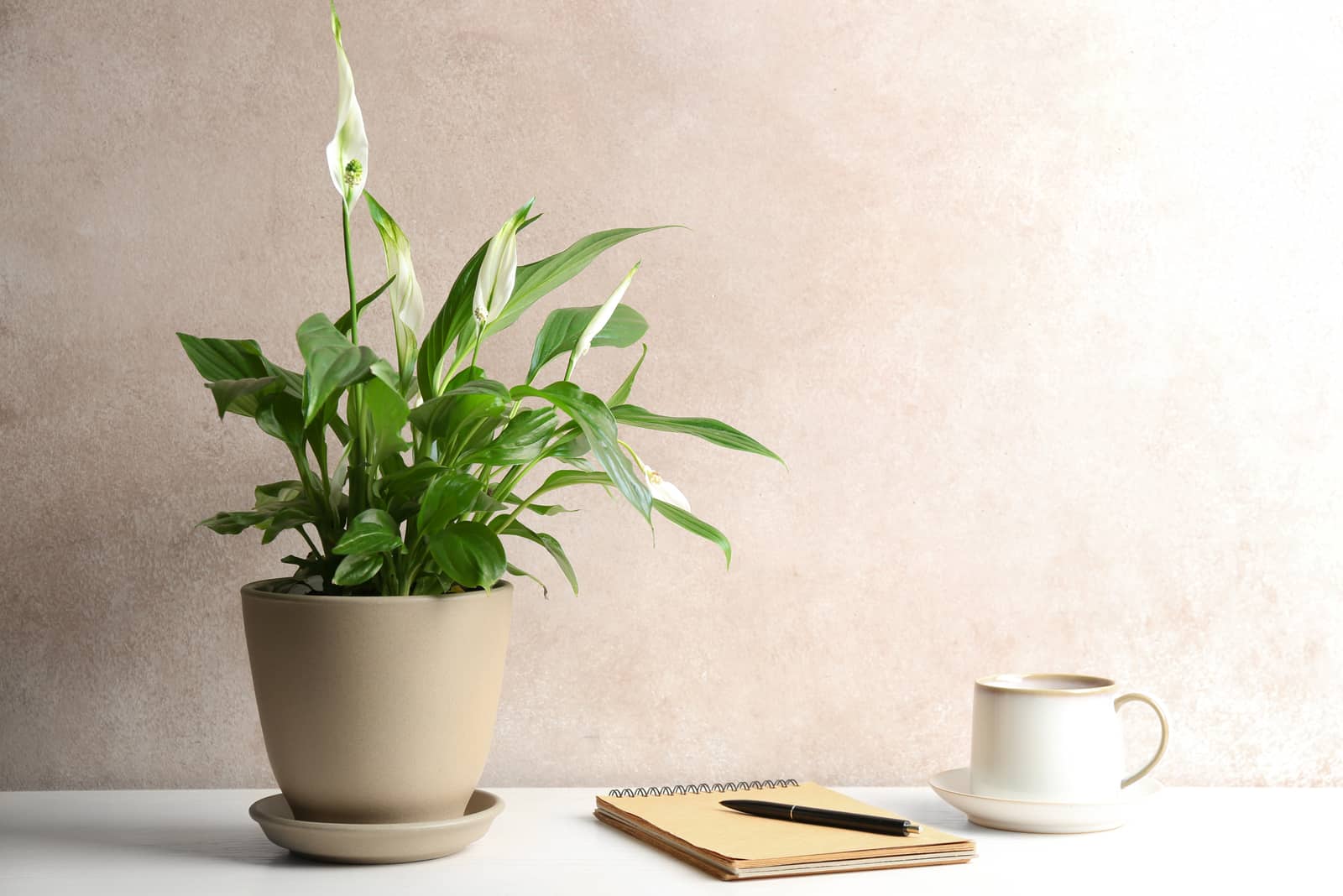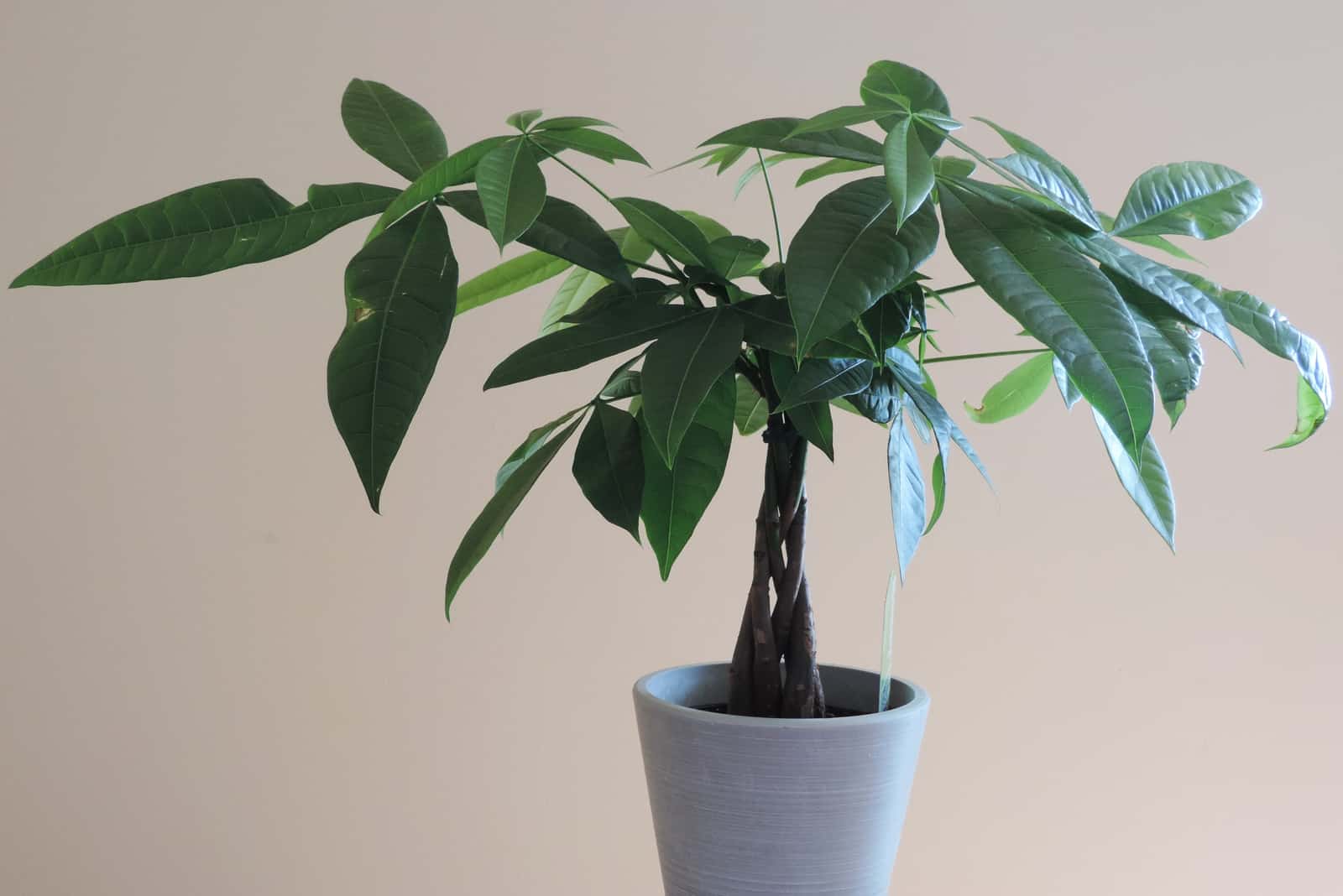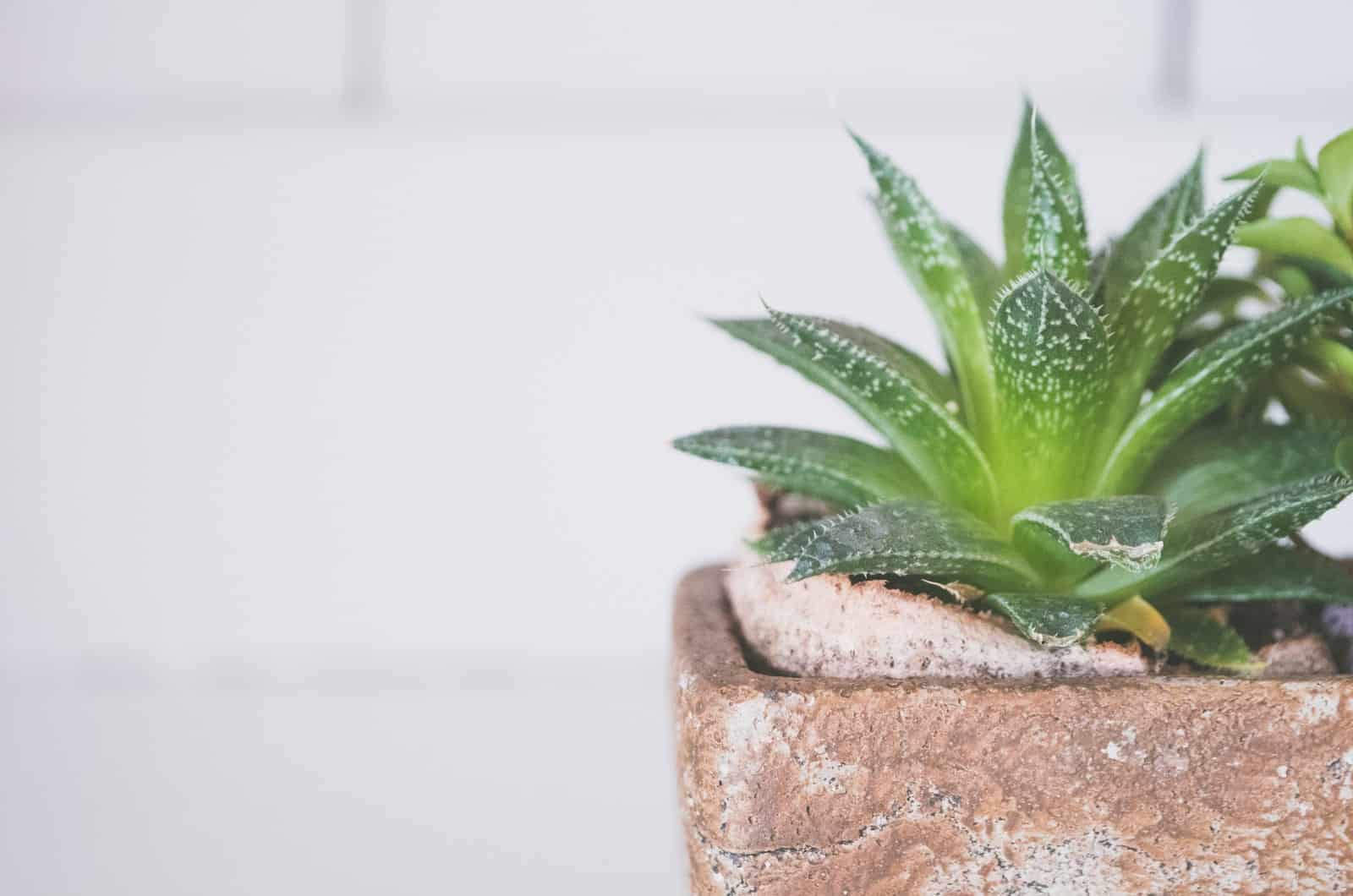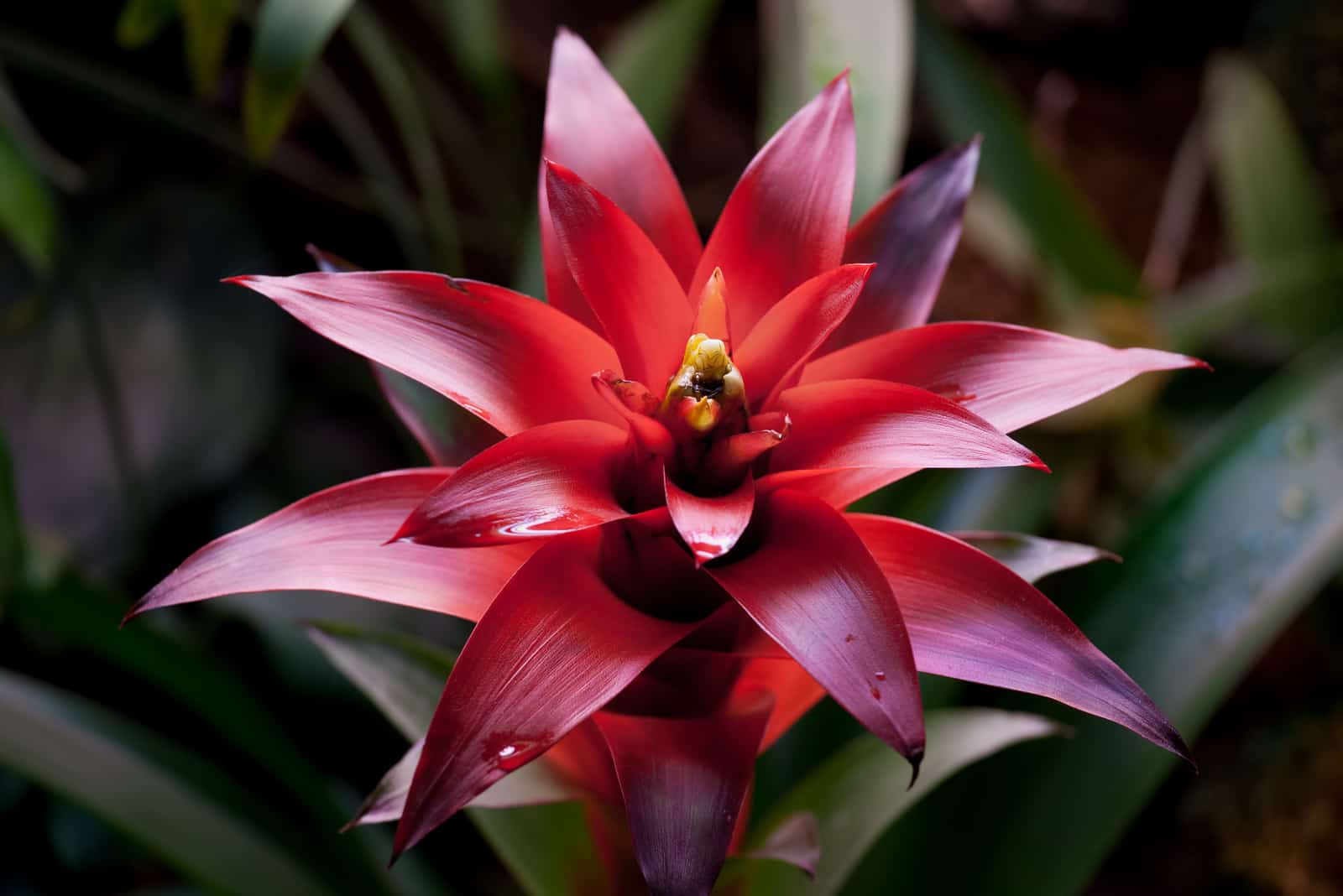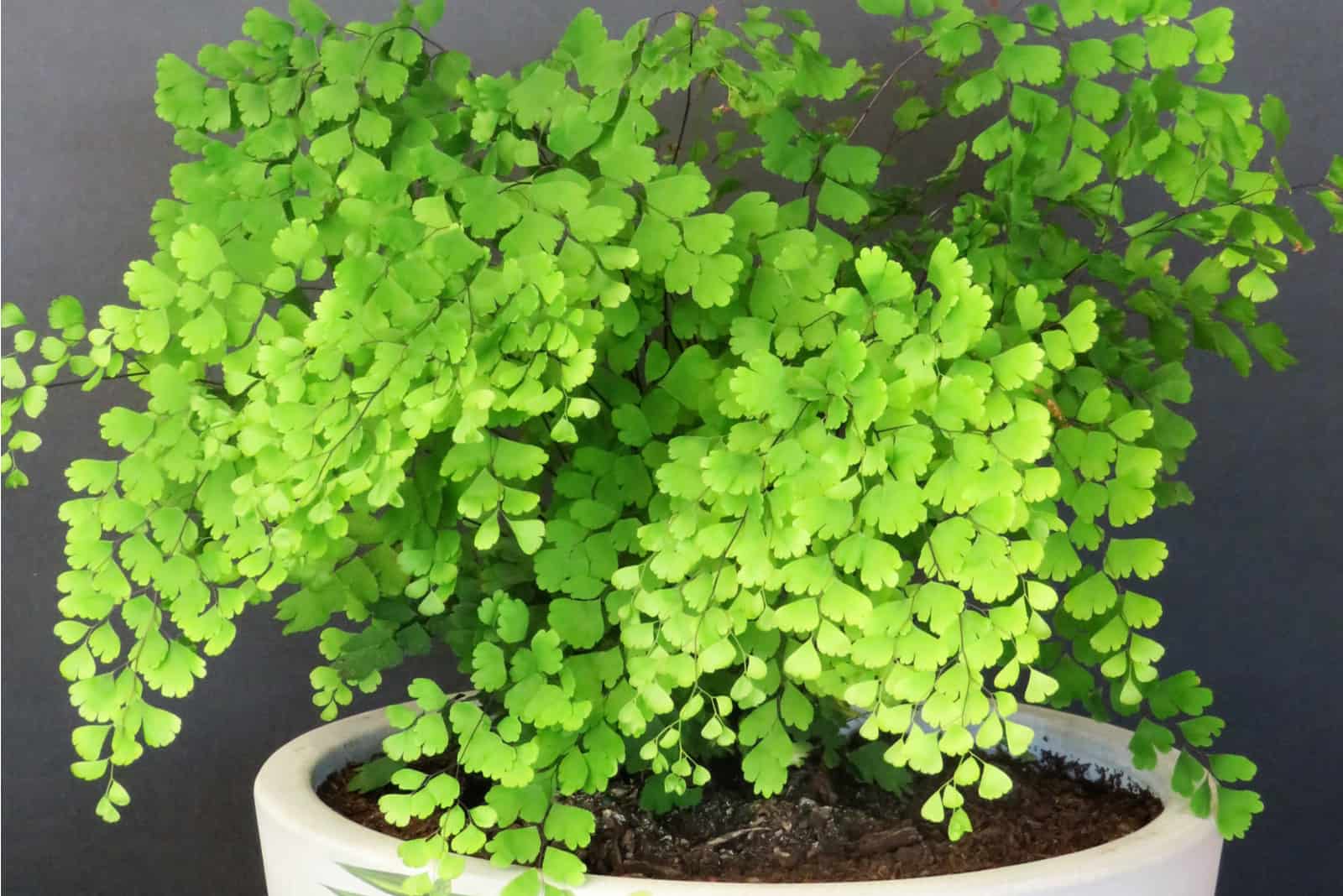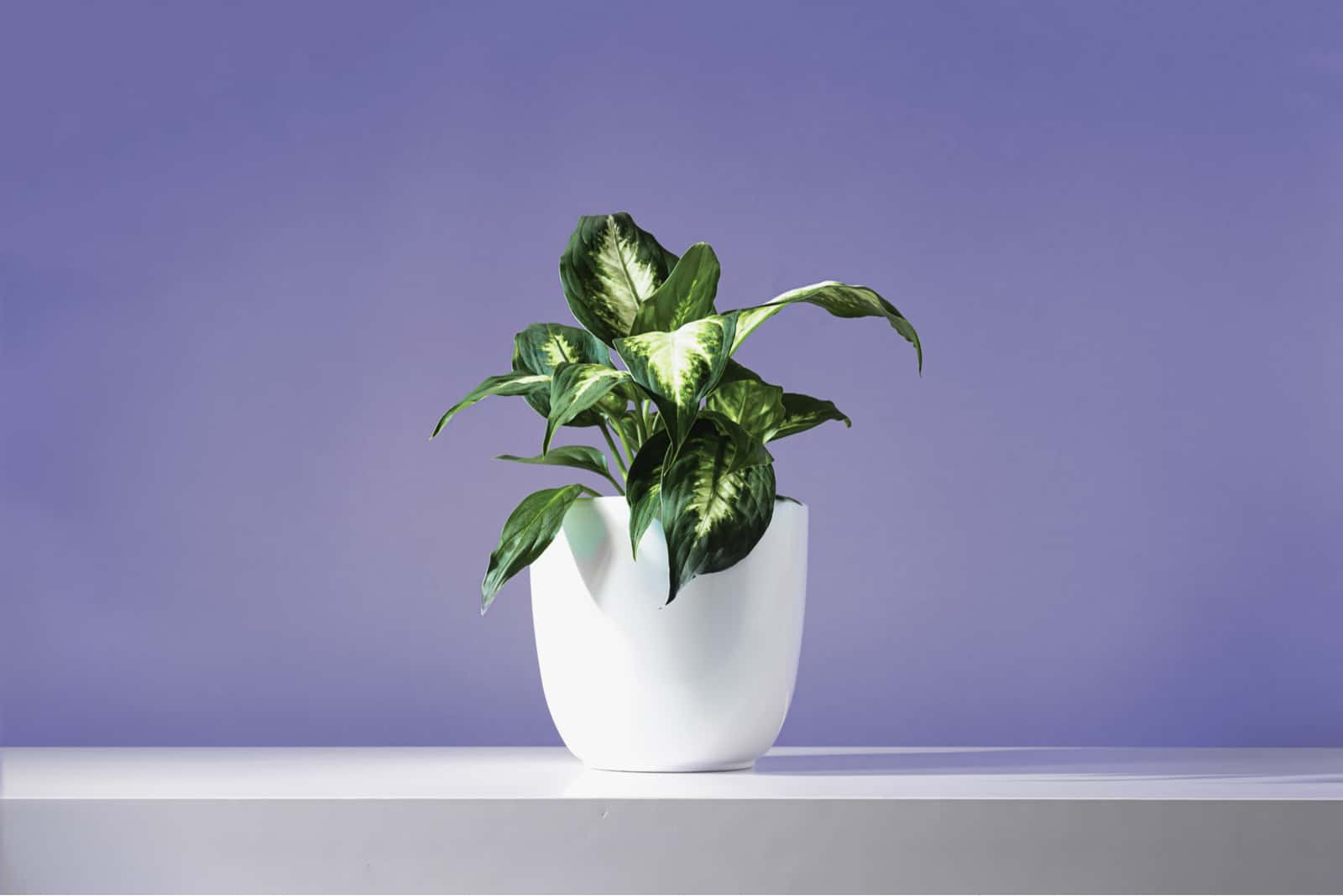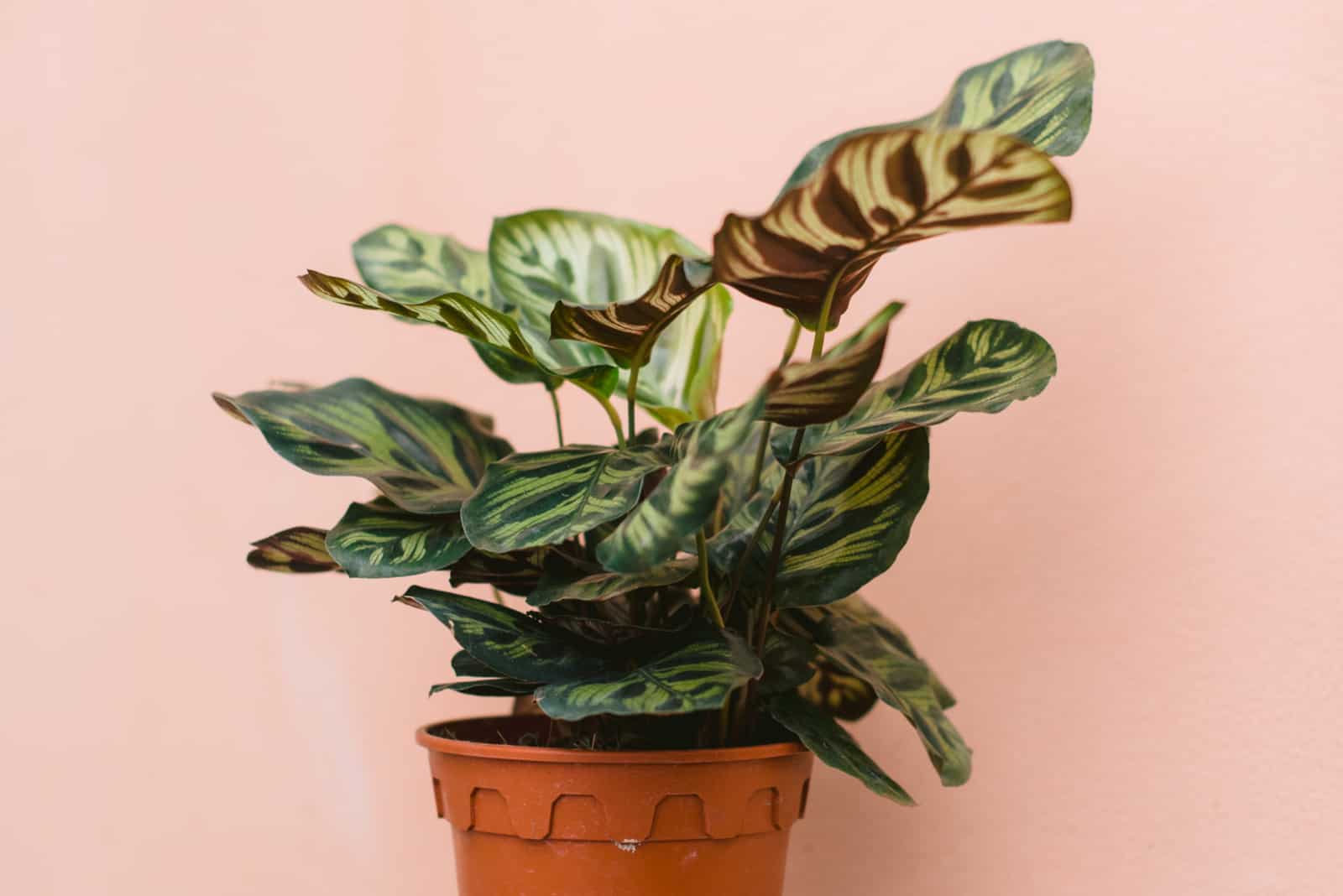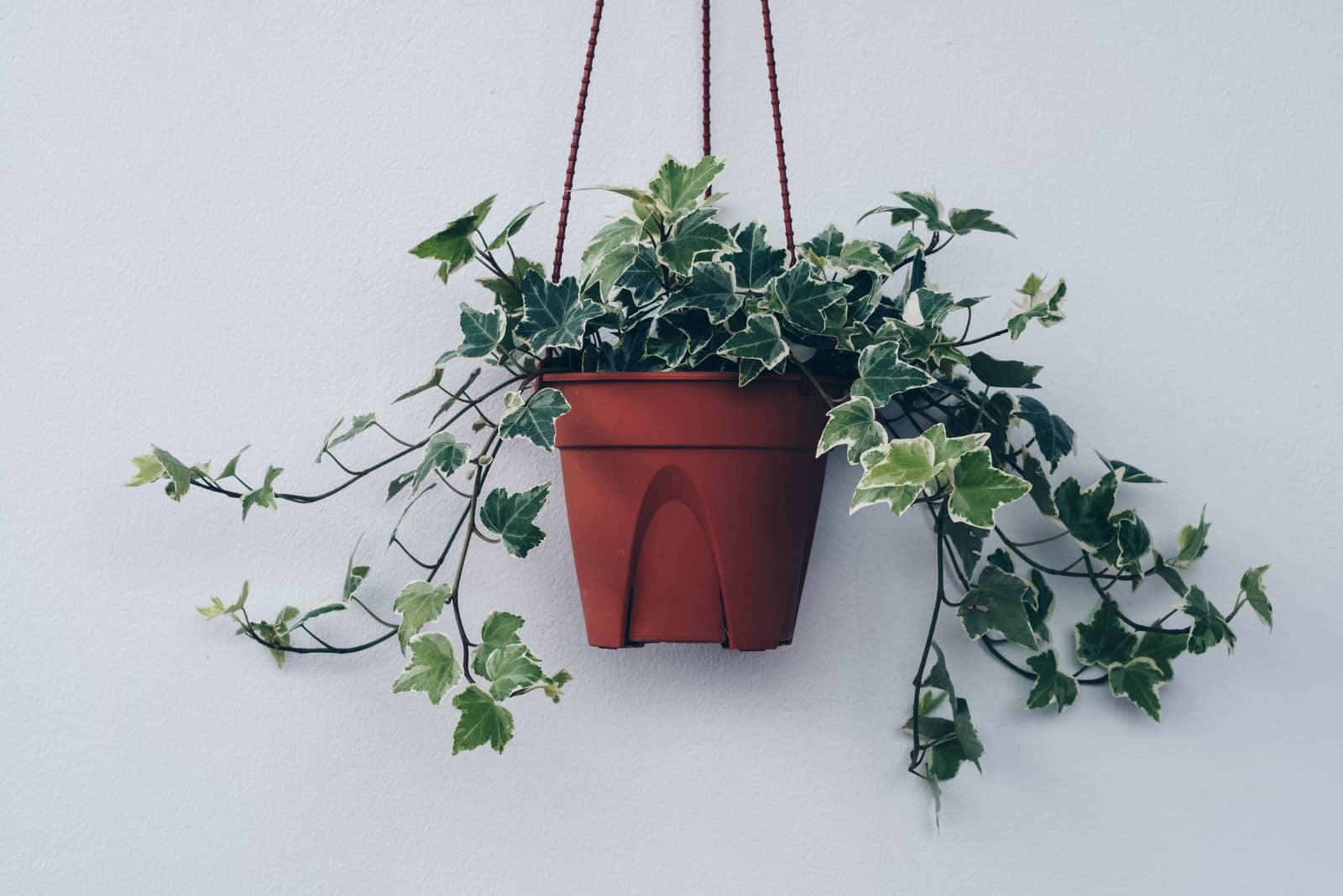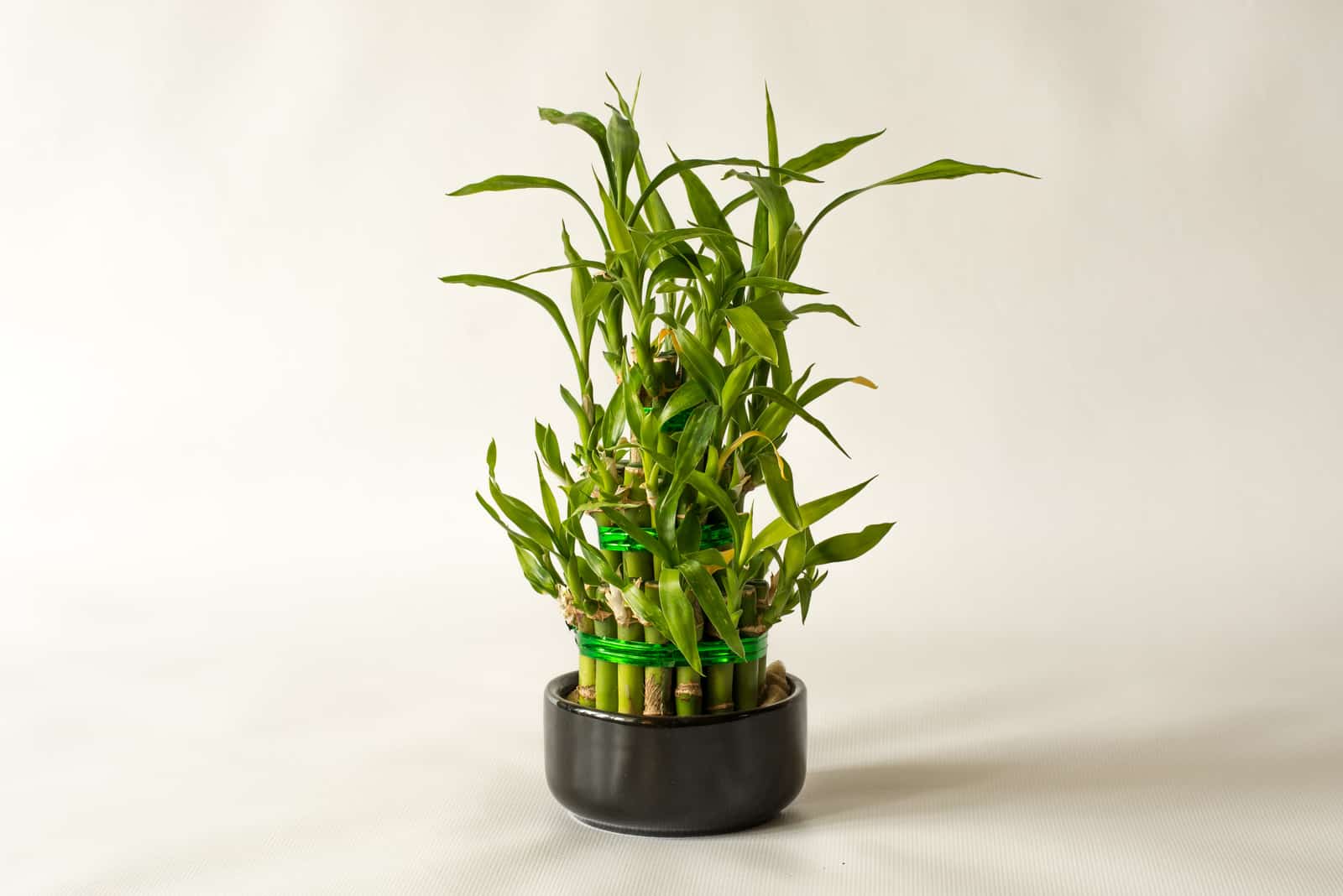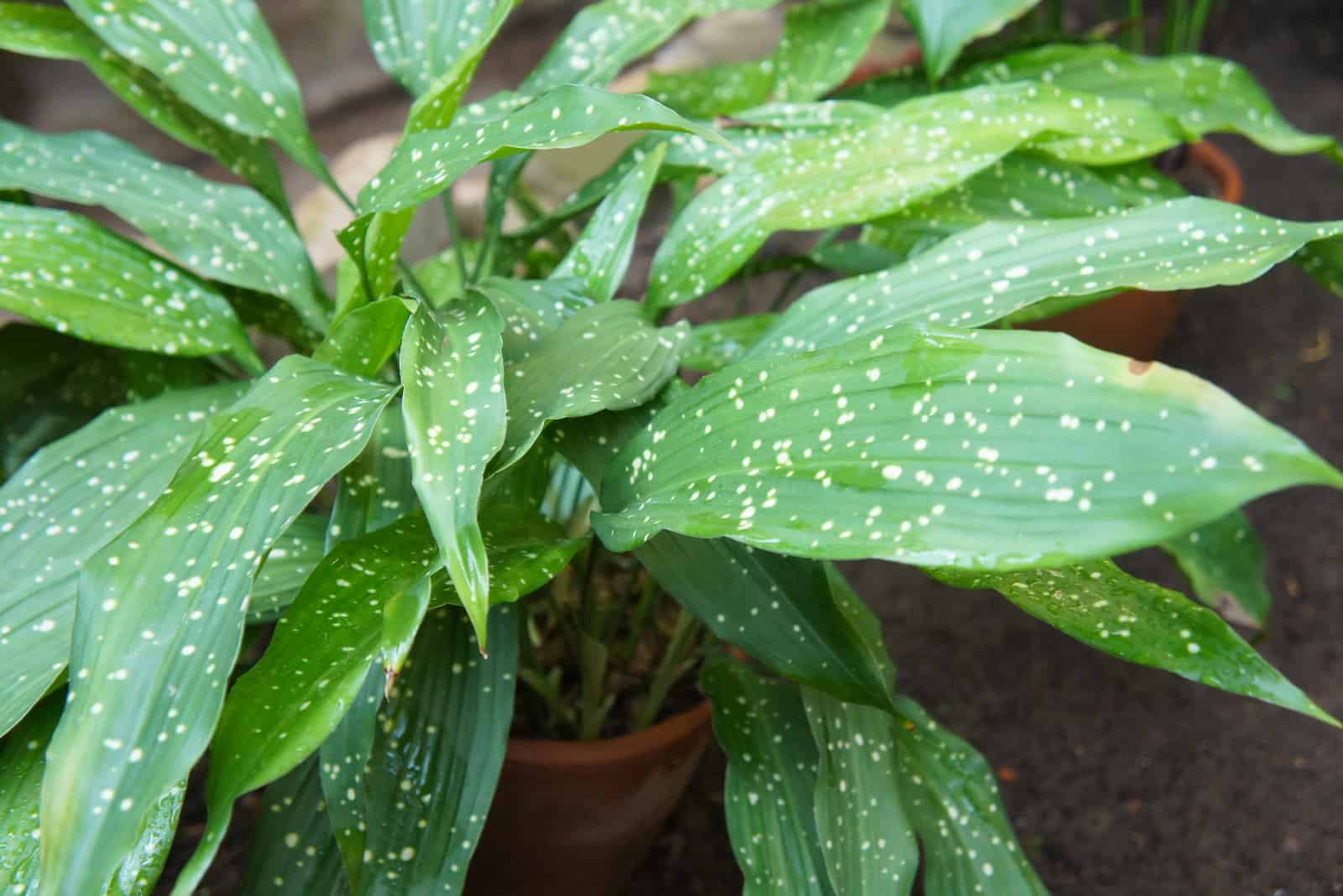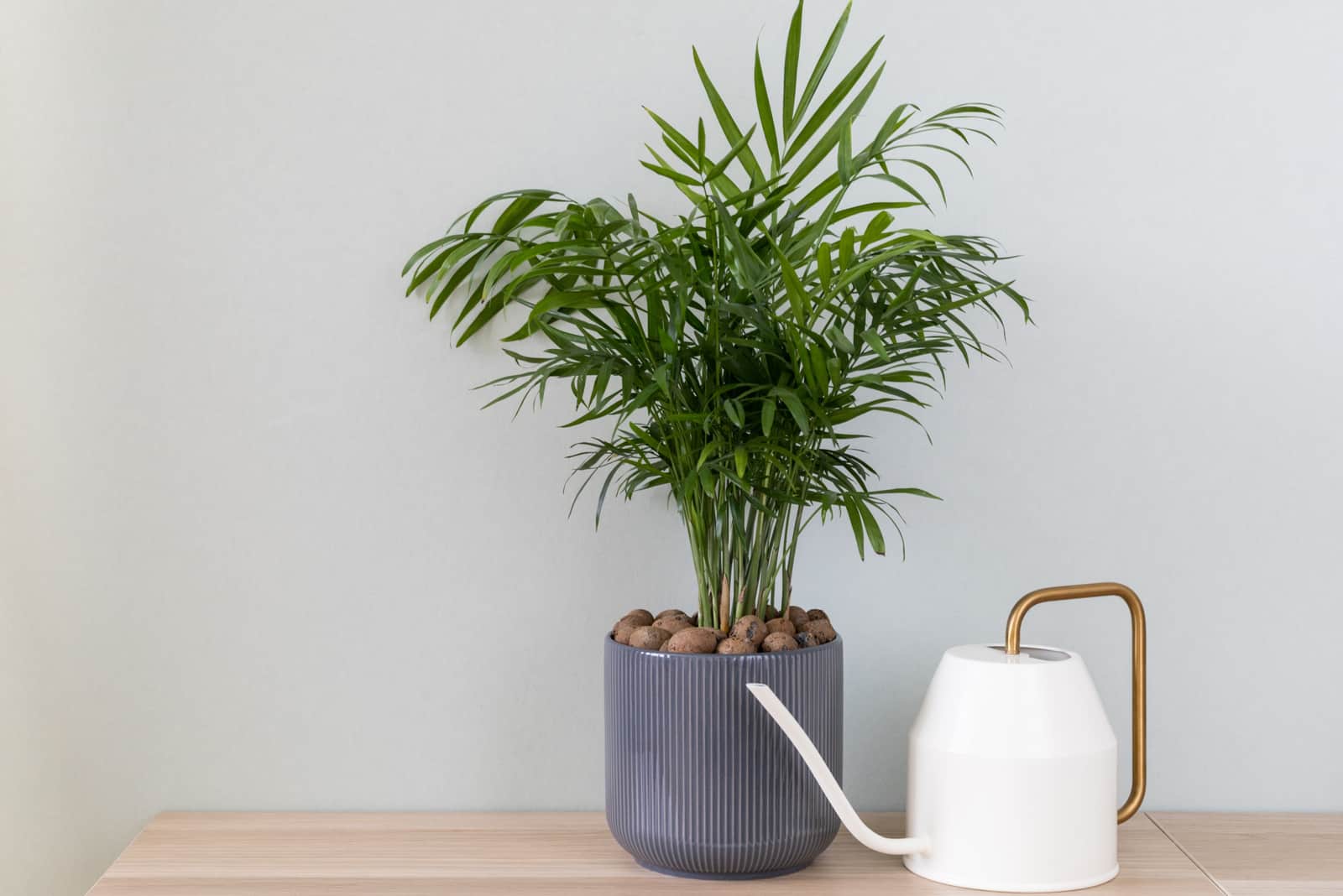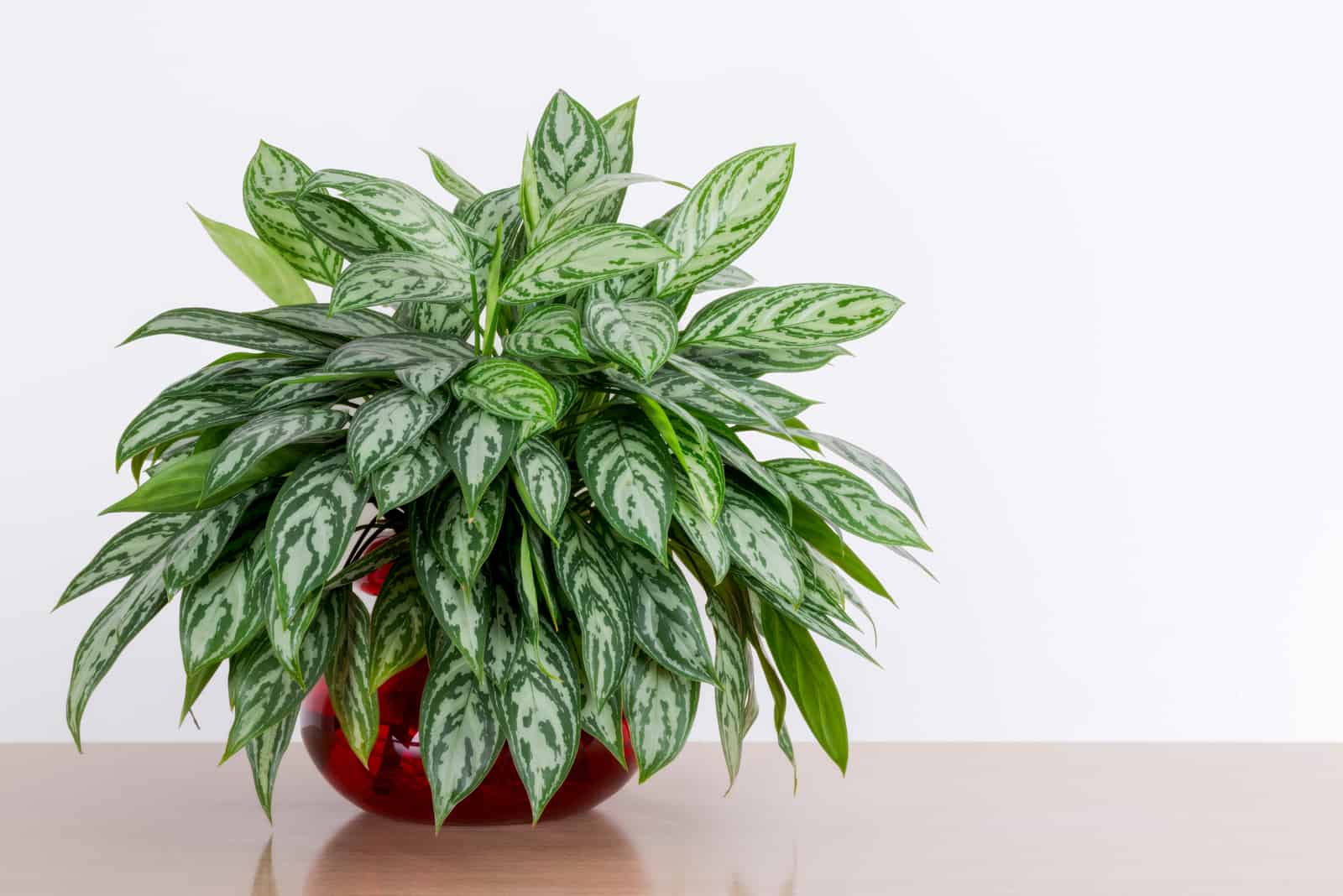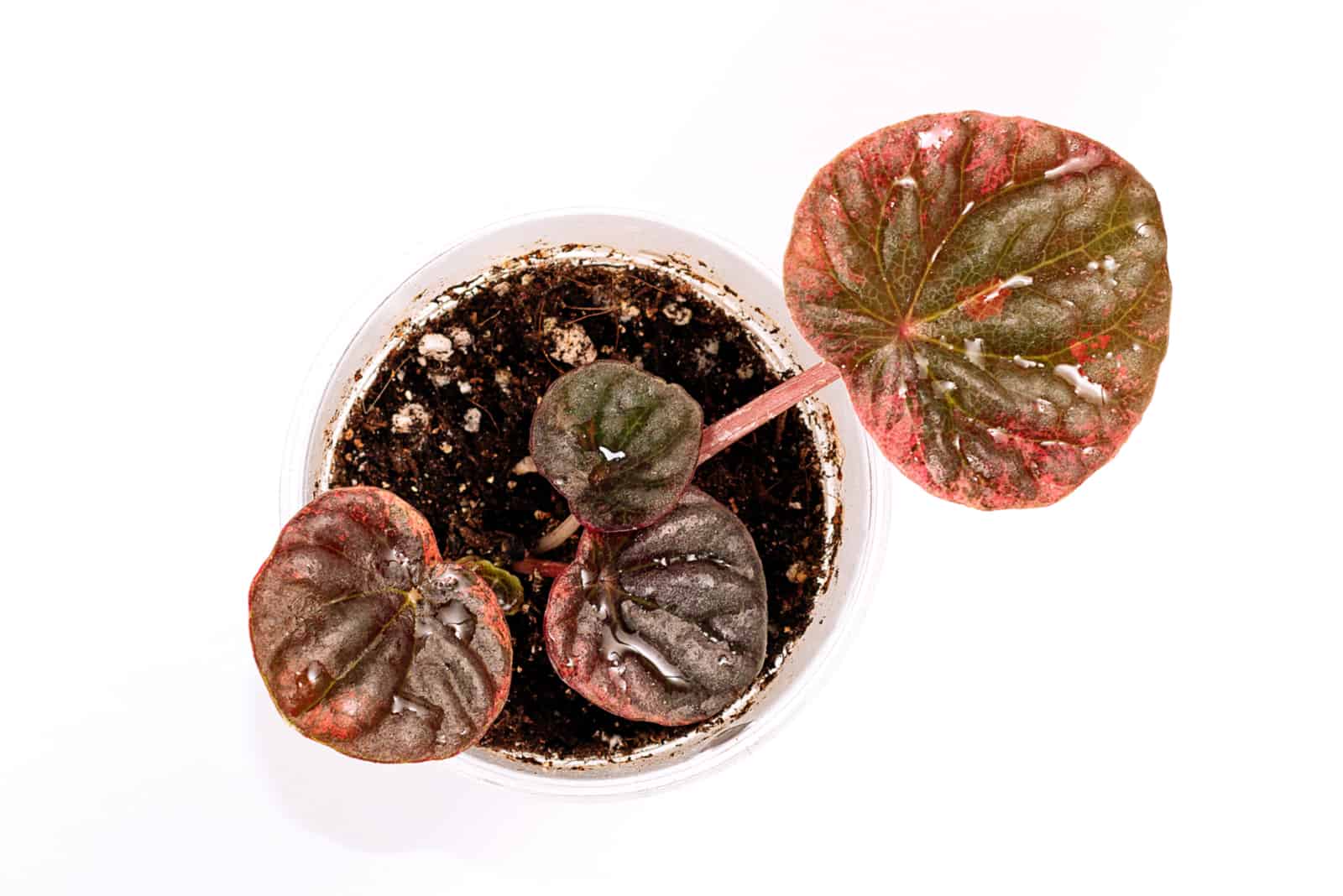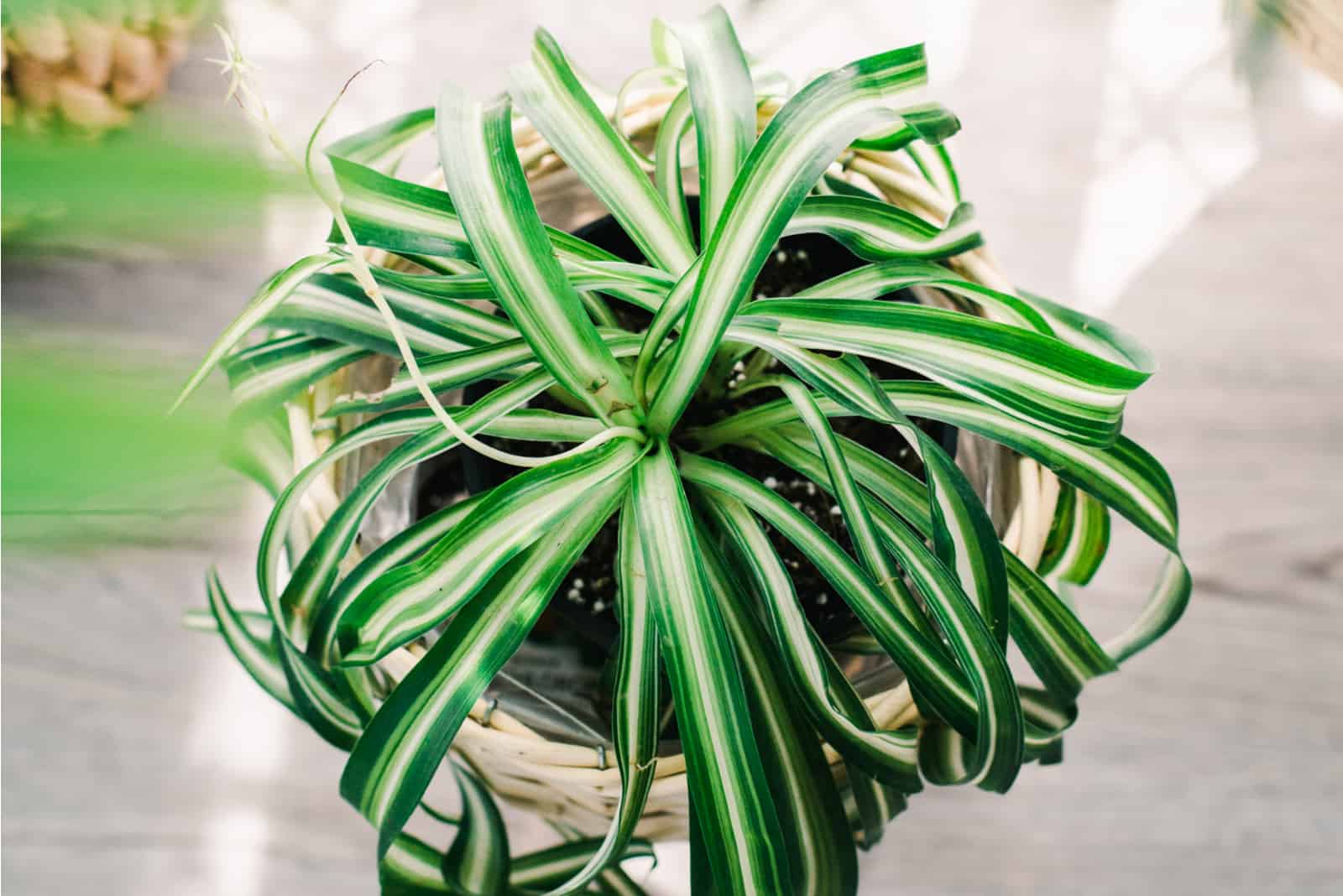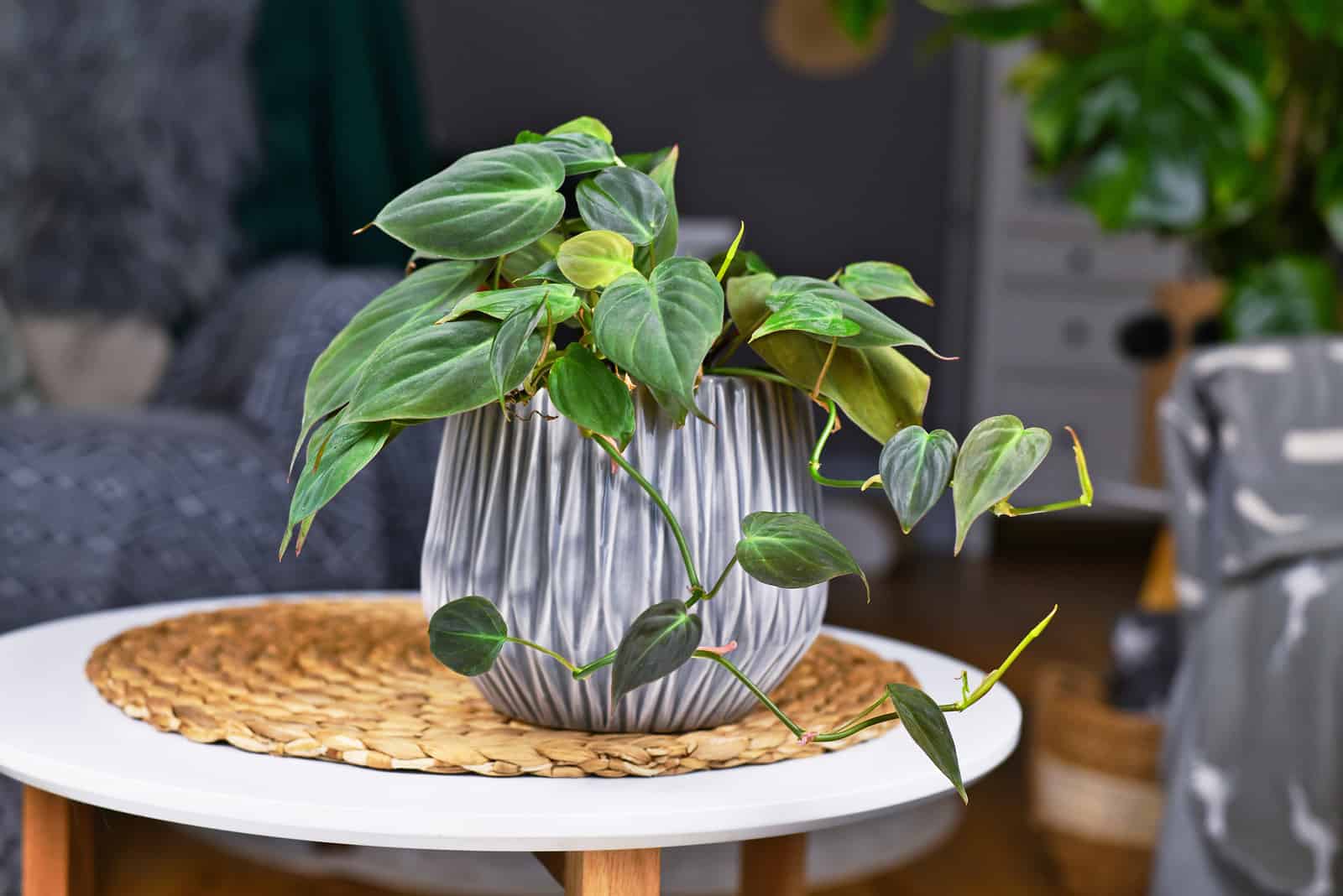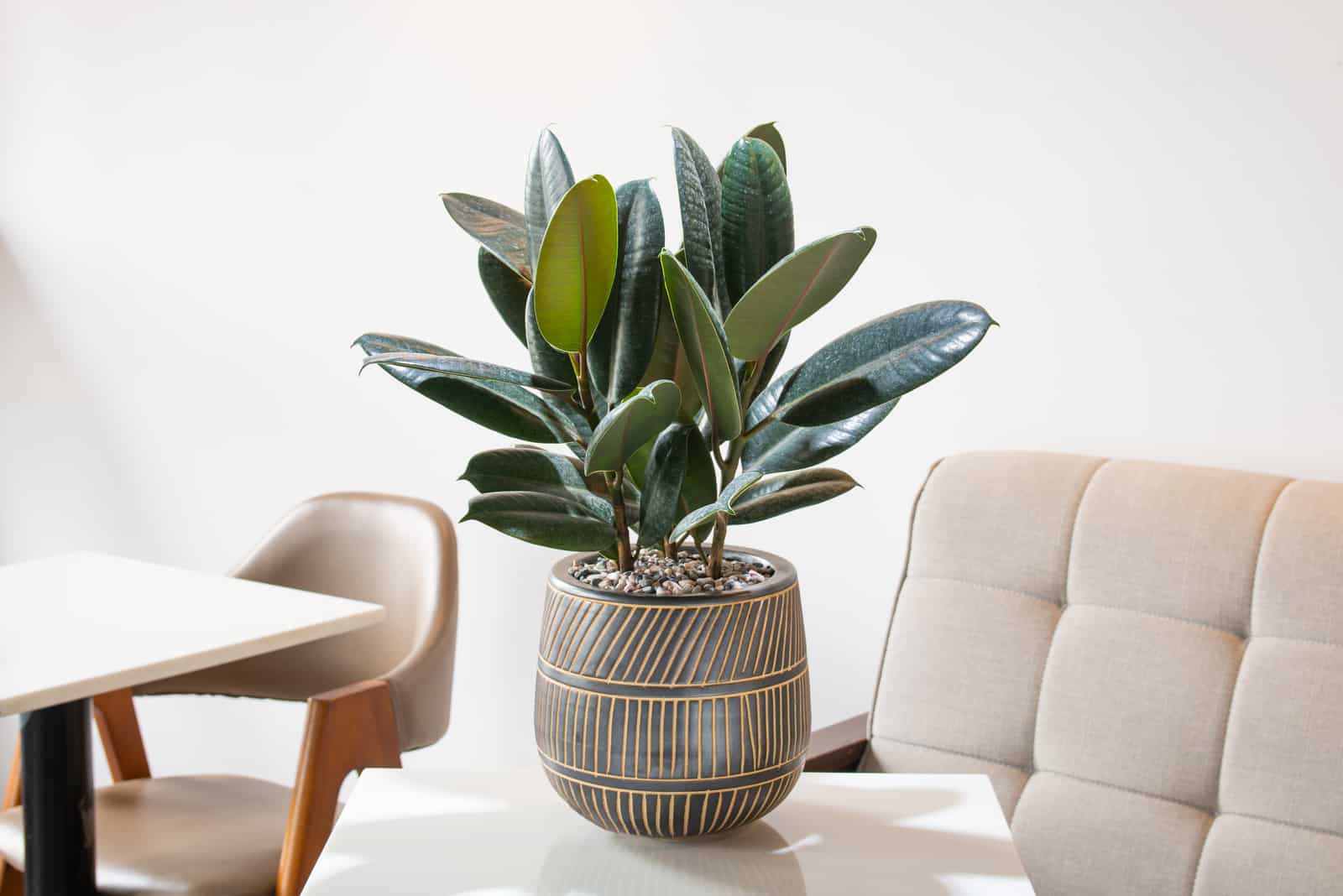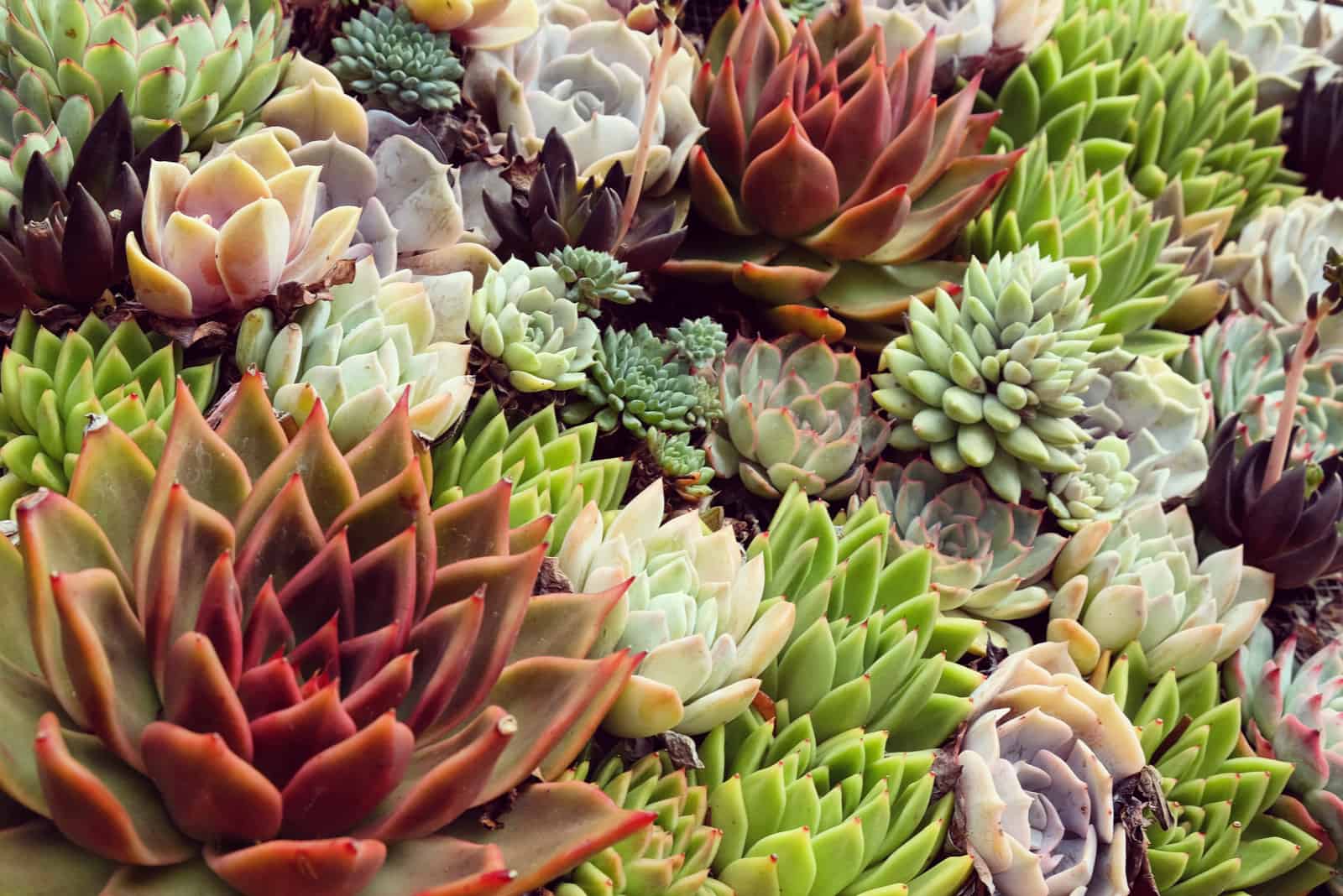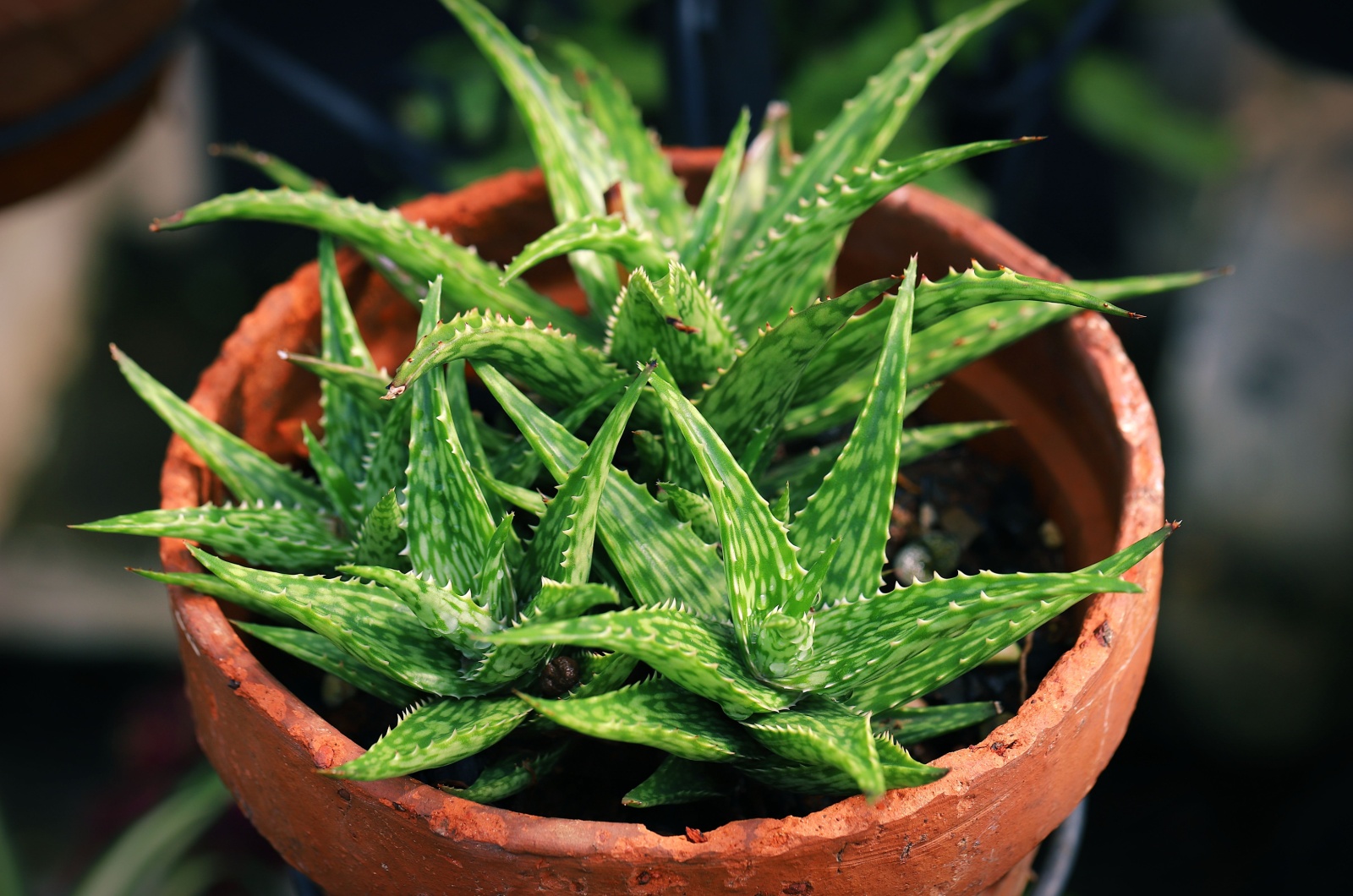If you work in an office where everything seems kind of gray because there is literally no natural light, I’m sure things can get pretty tiring.
You spend most of the day in your office, so you don’t get a connection with nature, and it has been proven that plants can boost productivity by up to 15%.
Regardless of your position at the office, I think everyone would benefit from investing in some plants to make the workspace more lively and cheerful!
But, how would a plant grow without natural lighting?
That problem has been solved thanks to artificial grow lights, which are used for plants grown in indoor environments.
Let’s take a look at the best plants for office with no windows and how to take care of them. They might not need direct sunlight, but they have other requirements instead, so there’s plenty to learn!
What Are The Best Plants For Office With No Windows?
Luckily, there are plenty of plants that can grow perfectly well in an office space with artificial light or low light conditions. Carefully choose which option suits you the best because some plants are low-maintenance plants, while others require some extra love and plant care.
Here are some of the best plants for your office desk:
• Monstera
• ZZ plant
• Snake plant
• Pothos
• Peace lily
• Money tree
• Aloe vera
• Bromeliad
• Maidenhair Fern
• Dumb Cane
• Peacock plant
• English Ivy
• Lucky Bamboo
• Cast Iron plant
• Parlor palm
• Chinese Evergreen (Aglaonema)
• Peperomia
• Spider plant
• Philodendron
• Ficus
• Sempervivum
Read on to find out the features of each plant and learn how to take care of them.
1. Monstera
Whether you have an empty space on your office desk or an empty corner in your office, there’s a Monstera variety perfect for the job!
Most Monstera plants have green leaves with various fenestrations, for instance, the Monstera acuminata is a rare variety that kind of looks like a plant skeleton!
Or you can choose a Mini Monstera for a desk plant. Imagine looking at that cute little plant when you are swamped with work, it can be really relaxing.
Bear in mind that you shouldn’t get any variegated Monsteras because they require natural lighting.
How To Take Care Of A Monstera
These plants are low-maintenance and slow-growers, so you won’t be spending much time and energy taking care of them. All you have to do is water them when the soil gets dry and add a bit of fertilizer during the growing season.
Be careful with watering because you can easily end up overwatering your Monstera, which can lead to root rot and eventually the death of the plant (neither you nor your plant should be dying at work!). If you don’t water it enough, on the other hand, you will end up with an underwatered Monstera with yellow leaves instead of dramatic green ones.
2. ZZ Plant
Originating from Africa, this drought-resistant plant is a great office plant, especially for people who might forget to water their plants every now and then.
The ZZ plant has small and compact green leaves rich in green pigment (otherwise known as chlorophyll), and they grow best in low light conditions.
These plants can be placed on shelves, desks, or even in dark bathrooms!
Don’t worry, even though they are called ZZ plants, they aren’t asleep and will make your office environment cozy and inviting!
How To Take Care Of A ZZ Plant
As they don’t require that much light and water, they will grow slower than the rest of your indoor plants, so you won’t have to worry about pruning or repotting. You can water it every once in a while, add fertilizer twice a year, and voila!
3. Snake Plant
The snake plant, also known as the Mother-in-law’s tongue or Sansevieria, is a popular houseplant nowadays because it is super easy to take care of and can be propagated. Seriously, every beginner gardener should practice propagation with a snake plant!
The long dark green leaves are a great way to improve the decor in your office, but also to purify the air as well!
According to NASA, these plants act as air purifiers because they are able to absorb toxic pollutants from the air and produce oxygen at the same time.
Bear in mind that there are plenty of Snake plant varieties with different variegations, so you should be able to find one that suits your style!
How To Take Care Of A Snake Plant
You won’t have to worry about repotting a Snake plant because they are slow growers and only need repotting every 3 to 6 years. Some folks consider this feature as one of the snake plant’s disadvantages, but I think it is great for an office environment!
They can adapt to various lighting conditions. However, if you want to make them grow faster, then you should put them in indirect bright light.
Leave the soil to dry out before watering it again and apply fertilizer about three times during the growing season.
4. Pothos
The pothos is another popular houseplant, and for several good reasons.
First, the Epipremnum aureum, or Pothos, can be trailing or climbing, so you can decorate them however you want! How cool would it be to have a wall covered with small green leaves and long vines?
Also, there are varieties that produce leaves with different variegations, but you have to be careful here as highly variegated species like the Marble Queen need ample sunlight for growth.
However, the Golden Pothos, even though variegated, can grow normally in low light areas, although the yellow color won’t be as intense!
It is also believed that this type of plant can attract good fortune and prosperity.
I’m sure everyone can use a little bit of extra luck in their workspace!
How To Take Care Of A Pothos
Luckily, these plants also don’t require any special treatment when it comes to plant care. All you have to do is water them every other week or when the top of the soil dries out, and use liquid fertilizer during the growing season.
Aroid potting soil is the best for Pothos, and you can keep them in indirect sunlight if you want a more variegated plant. As they are tropical plants, you shouldn’t let the humidity levels drop below 50%.
5. Peace Lily
The Peace Lily, also known as Spathiphyllum, is another low-light plant that can absorb toxic pollutants from the air. Though many people think of the Peace Lily as a flowering plant, it actually produces a leaf bract that looks like a single white flower.
Regardless, it’s still one of the most beautiful plants I’ve ever seen!
This plant is also commonly grown as a Japanese indoor plant. So, if your goal is to have a Japanese aesthetic in the office, you should definitely go and buy a Peace Lily (hopefully it can attract some actual peace!).
Bear in mind that they do need some light source to grow happy and healthy, and you can use a fluorescent light to do the job.
How To Take Care Of A Peace Lily
You’ll need to properly water this plant, and then wait for the soil to dry completely before watering it again. I would suggest watering it once a week. Inadequate watering can cause certain issues and make your Lily plant look droopy.
The Peace Lily should be repotted in a larger pot every spring, and the temperature shouldn’t ever be lower than 65 degrees Fahrenheit. They are poisonous, so you should keep your kids and pets away, though I doubt that there are any in the office!
6. Money Tree
This lucky plant is a succulent with a long lifespan. It’s a South African native with lovely pink and white flowers, and is commonly used as a decorative indoor plant. It’s also small enough to fit on a table and add to a dynamic work environment.
In the wild, it can grow up to 50 feet tall! Though when grown indoors they can adapt and grow significantly smaller — especially if you are using artificial lights in an office.
This plant is one of the most popular money plants that attract money and good luck.
How To Take Care Of A Money Tree
You only need to moderately water this plant. It’s best to check if the top of the soil has dried before watering it again. Apply fertilizer once a month during the growing season.
You can also keep this plant in water, however, this might take more time and energy because the water needs to be changed weekly.
7. Aloe Vera
Aloe Vera is probably the best plant to grow in a windowless office!
Although it is used to growing in direct sunlight, this plant can easily adapt to low light conditions as well, making it perfect for growing in a workspace.
Aloe is a succulent that produces long and thick green leaves that will look absolutely adorable on your table!
You can also squeeze the gel out of the leaves — Aloe Vera gel is a great treatment for bruises and sores.
How To Take Care Of An Aloe Vera
The Aloe plant is a succulent that requires no specific plant care and is even drought-tolerant, which makes it excellent for all you busy plant enthusiasts out there! You won’t have to worry if you forget to water your Aloe Vera plant every now and then.
Be careful not to overwater your Aloe plant, though, as it can lead to various damaging issues. It would be best to check if the soil has completely dried before watering.
8. Bromeliad
This is a bit of an unusual plant that is able to grow in low light areas. It is somewhat oddly shaped compared to other plants; but hey, different is good, right?
It comes in several colors, though orange, red, pink, and white are the most common. You can grow several Bromeliads to have a fun and colorful office!
They can grow and even bloom under artificial lights, which is not a common feature among low-light indoor plants.
How To Take Care Of A Bromeliad
Similar to Aloe Vera, these are drought-tolerant plants that can survive without water for a while. However, you should still provide them with some water when the top layers of the soil have dried.
Avoid growing Bromeliads in metal containers as they are very sensitive to metal and would have a hard time developing and blooming. They are also easy to propagate, just separate the pups and plant them in well-draining soil.
9. Maidenhair Fern
Here is yet another delightful plant that can decorate your office to make it look more fun and lively!
The Maidenhair Fern, otherwise known as Adiantum, is a plant that produces triangle-shaped bright green leaves on a long stem and is a must-have in every fun office out there.
You can keep it in indirect light or use artificial growing lights instead!
How To Take Care Of A Maidenhair Fern
When it comes to taking care of a Maidenhair Fern, you should water it with distilled water instead of tap water because it is sensitive to various chemicals and chlorine that can be found in tap water.
It is important to keep the soil moist, so you will have to water it every other day.
10. Dumb Cane
The Dieffenbachia, also known as Dumb Cane, is a small plant with variegated leaves that originates from the Caribbean.
If you’re wondering why it’s called “Dumb Cane” — it is because you are rendered speechless if you ingest any part of this plant (don’t abuse this information though!). That being said, the Dumb Cane is a highly poisonous plant that should be kept away from kids and pets.
It is a great plant because it is able to grow in low light conditions, making it perfect for office environments!
How To Take Care Of A Dumb Cane
Keep the soil moist, but don’t let it get soggy as it makes the plant more susceptible to pests and fungal infections.
The soil should be rich in nutrients, slightly acidic, and preferably peat moss-based. The Dumb cane needs damp soil and isn’t drought-tolerant, so don’t wait until the soil is completely dry between waterings.
11. Peacock Plant
The Peacock plant, also known as the Calathea White Fusion, is a tropical plant that produces leaves with white patches. There are a few things that make this plant unique: first, its leaves close during the night and open again in the morning, which is a phenomenon known as “nyctinasty”.
It looks like they are praying, which is why they are also referred to as “prayer plants”.
Another thing is that their variegations are reversible — meaning that the white part can turn green and vice versa!
It is also quite small and doesn’t require natural lighting, which makes it perfect for an office environment!
How To Take Care Of A Peacock Plant
To be honest, you will have to spend a lot of time and energy on this plant for it to thrive. You will have to keep humidity and temperatures at the levels they are used to back in tropical rainforests!
You can either mist the Peacock plant or invest in a small humidifier to keep your plant happy and thriving!
Pruning is also a necessary step as they are moderately fast growers. You will also have to keep the soil moist. Check if it has dried completely before watering, and avoid keeping the prayer plant in soggy soil for too long or it will end up drooping. Use distilled or filtered water only.
12. English Ivy
Make your workspace more comfortable by getting an English Ivy plant! This gorgeous plant has the ability to trail and climb, so you can even install a small trellis in your office to spice up the environment.
The leaves have 3-5 waxy lobes without a single hair and they resemble tiny pears. They are dark green in color, with the upper portion being darker than the lower.
How To Take Care Of English Ivy
This plant prefers growing in fertile soil with good drainage, so I would recommend you use loamy soil. Humidity should be above 40%, but don’t ever let the temperature drop below 60 degrees Fahrenheit.
Although this ivy doesn’t require much water, it does prefer damp soil. Once the topsoil is dry, water it and let the excess moisture drain away from the roots so they don’t sit in water.
13. Lucky Bamboo
Here is another plant that attracts prosperity and fortune!
The Lucky Bamboo, also known as Dracaena sanderiana, is probably one of the easiest plants to take care of.
It can grow in water or soil and with or without light. They are like chameleons; adaptable to any environment!
It is a great way to bring some greenery in the office, and also to try your luck and attract some money!
How To Take Care Of A Lucky Bamboo
As we said earlier, this money plant can flourish in either water or soil. If you go with water, clean the container every few months and fill it with filtered water once a week. However, if you use soil it must be kept damp and be able to drain properly.
14. Cast Iron Plant
Cast Iron Plants, otherwise known as the Aspidistra elatior, are hardy plants that can adapt to various conditions. They’re not called iron plants for no reason!
They produce lush dark green foliage which will make a great addition to your work family. As these leaves are quite large, make sure to clean them every once in a while because the dust may attract pests.
How To Take Care Of A Cast Iron Plant
Provide them with well-draining and moist soil. Water them once the top of the soil is completely dry. You can keep this plant in drafty areas, they don’t mind it at all!
Misting is a must because they absolutely love high humidity! This will also give the plant a special glow. They are slow growers so you won’t have to prune them too much, maybe just once or twice during the growing season.
15. Parlor Palm
Once you get a Parlor palm in your office, it will seem like you are on vacation all the time! This tropical plant is a low-maintenance plant that produces lush leaves and is quite large compared to the other plants we have mentioned so far, so you could put it in an empty corner to liven up the space.
You can also expect it to produce flowers during the blooming period, which makes this plant even more aesthetically pleasing!
You can keep this plant happy and healthy if you provide it with artificial or indirect lighting.
How To Take Care Of A Parlor Palm
Watering can be tricky as these palm plants are prone to overwatering. The smartest move would be to check the soil, but this plant will also show signs of inadequate watering via the leaf tips browning and yellowing of the leaves, etc.
Apply liquid fertilizer once a month and keep this plant in warm temperatures away from cold drafts and vents. Repot the plant after 2 to 3 years or if you notice roots coming out of the pot.
16. Chinese Evergreen (Aglaonema)
This plant is also referred to as the “plant of steel”. The reason Chinese Evergreen, or Aglaonema, is called this is because of its fast-growing habits regardless of the conditions.
It comes in several different colors, but the most popular are pink, red, and silver. It can survive in low-light conditions and in dry air.
The Chinese Evergreen can also tolerate some dry spells in case you forget to water it.
All of these features make this plant an ideal candidate for growing in an office with no windows!
How To Take Care Of A Chinese Evergreen (Aglaonema)
Water this plant at least once a week in case the humidity is particularly low. It can tolerate dry air, however, it would much rather grow in a humid environment.
Your Aglaonema will grow without fertilization, though you can apply half the amount of a regular fertilizer to boost its growth and development.
As they are slow growers, you will have to repot the plant after a few years or if the roots start coming out of the drainage holes.
17. Peperomia
If you are not a gardener newbie, then you have probably already heard about Peperomia plants. They have become quite trendy recently, especially because there are a lot of different varieties that are easy to take care of.
They are all relatively small plants that can have variegated leaves, like the Peperomia Scandens Variegata, or you can choose a variety that produces monochrome leaves, such as the Peperomia Frost.
Don’t worry, you can’t go wrong with any option because they are all simply magnificent!
Another great thing is that they are also considered an air-purifying plant, which is why I would definitely consider buying a Peperomia plant for your workspace.
How To Take Care Of A Peperomia
As we mentioned, they are low-maintenance plants and require minimal plant care. As we already know about the ideal light conditions, let’s focus on the different points of its plant care guide.
You should provide them with soil that is well-draining, porous, and slightly acidic. Always check the soil before watering.
Apply an all-purpose fertilizer for houseplants during the growing season and prune occasionally. As they will grow slower in artificial lighting, plan to repot them after 3 years or when they become rootbound.
18. Spider plant
There’s no need to be concerned that the spider plant will actually attract spiders! Their name comes from the little plantlets that grow on their long stems, which resemble spiders.
Chlorophytum comosum is their botanical name, and they are also known as spider ivy, airplane plant, and ribbon plant.
They originated in South Africa’s tropical forests and are now widely grown as indoor plants.
Long, palmate green leaves and little white blooms are characteristic of these low-maintenance and fast-growing plants. Spider plants gained popularity after NASA published data demonstrating that they can filter and remove 90% of pollutants from the air.
They come in various colors, but my personal favorite is the Purple spider plant!
You can put these plants in hanging baskets or keep them as desk plants (though their foliage can take up a lot of space).
How To Take Care Of A Spider Plant
Spider plants should be watered once the topsoil is completely dry, and you should use distilled water instead of tap. Soil should be well-draining and moist, and you can use either loam, chalk, or sand.
They can even tolerate temperatures as low as 35 degrees Fahrenheit, though humidity levels should be much higher. This is why I suggest you mist your spider plant.
Apply half the normal amount of all-purpose fertilizer once or twice a month during the growing season, which is throughout spring and summer.
19. Philodendron
Here is yet another trendy indoor plant! Philodendrons are perennial vines that are absolutely gorgeous and a must-have in every plant collection.
You can pick and choose from over 450 different Philodendron species, just make sure that you choose a non-variegated variety like the Imperial Green philodendron as they will grow much better in low light areas.
Even though they are beautiful, variegated philodendrons still need some natural lighting for the proper growth and development of their delicate leaves.
Nonetheless, I’m sure that you’ll find a variety that suits your office environment!
How To Take Care Of A Philodendron
Always check if the soil has dried completely before watering it again. Keep temperature and humidity levels high because Philodendrons are tropical plants that thrive in humid environments.
When it comes to soil, use a well-draining and porous one as air circulation is important for Philodendrons. You can apply fertilizer once a month during the growing season, or use worm casting if you want to go organic.
20. Ficus
There are almost 800 different ficus species, which is incredible!
With each Ficus having a unique plant care guide, we don’t suggest you buy any old ficus for a windowless office. Instead, you should buy a Ficus Benjamina, which is perfect for indoor spaces with low lighting.
The Ficus is also used in Feng Shui as it is believed that they attract good luck — another great reason to get yourself a Ficus and improve your workspace!
How To Take Care Of A Ficus
Find a nice spot with indirect light for your new Ficus, and avoid moving it — they hate moving and will lose some of their foliage. However, if this happens, don’t worry because it will grow back!
You should water them consistently to keep the soil moist, however, avoid overwatering them. If you have been reading this article from the beginning, you already know what you have to do!
However, you should water it less during the winter season. You will probably have to repot it at the beginning of each new growing season if you notice roots coming out of the pot. Fertilization is optional.
21. Sempervivum
If you are looking for a cute desk plant for an office with no windows, then the Sempervivum is the right choice for you.
This plant is extremely tolerant to various conditions; they are succulents that can grow on rocks in the wild after all!
It’s a small plant that produces tiny compact leaves and is not susceptible to any pests or diseases.
As it can go without water for a long period of time, you won’t have to worry about growing it in low-light areas.
How To Take Care Of A Sempervivum
There is not much to add when it comes to taking care of this plant. Grow them in well-draining compost with sand. Once the plant is established, you don’t have to worry about it too much.
To Sum Up
I would definitely recommend you get yourself some plants for your office, even if it has no windows!
Not only will they decorate your workspace, but they can also boost your productivity and lower fatigue levels. Some plants might even attract good fortune and prosperity!
You can pick and choose from any of the 21 plants for office with no windows in this article, or even get a few of them and create a mini-jungle in your work environment!
Don’t worry, the majority of these plants don’t require any special plant care so you won’t have to spend too much time and energy taking care of them.
Avoid bringing variegated and flowering plants into your windowless office as they require natural lighting to grow and thrive.
Until next time!
Like this post? Share or pin it for later!

